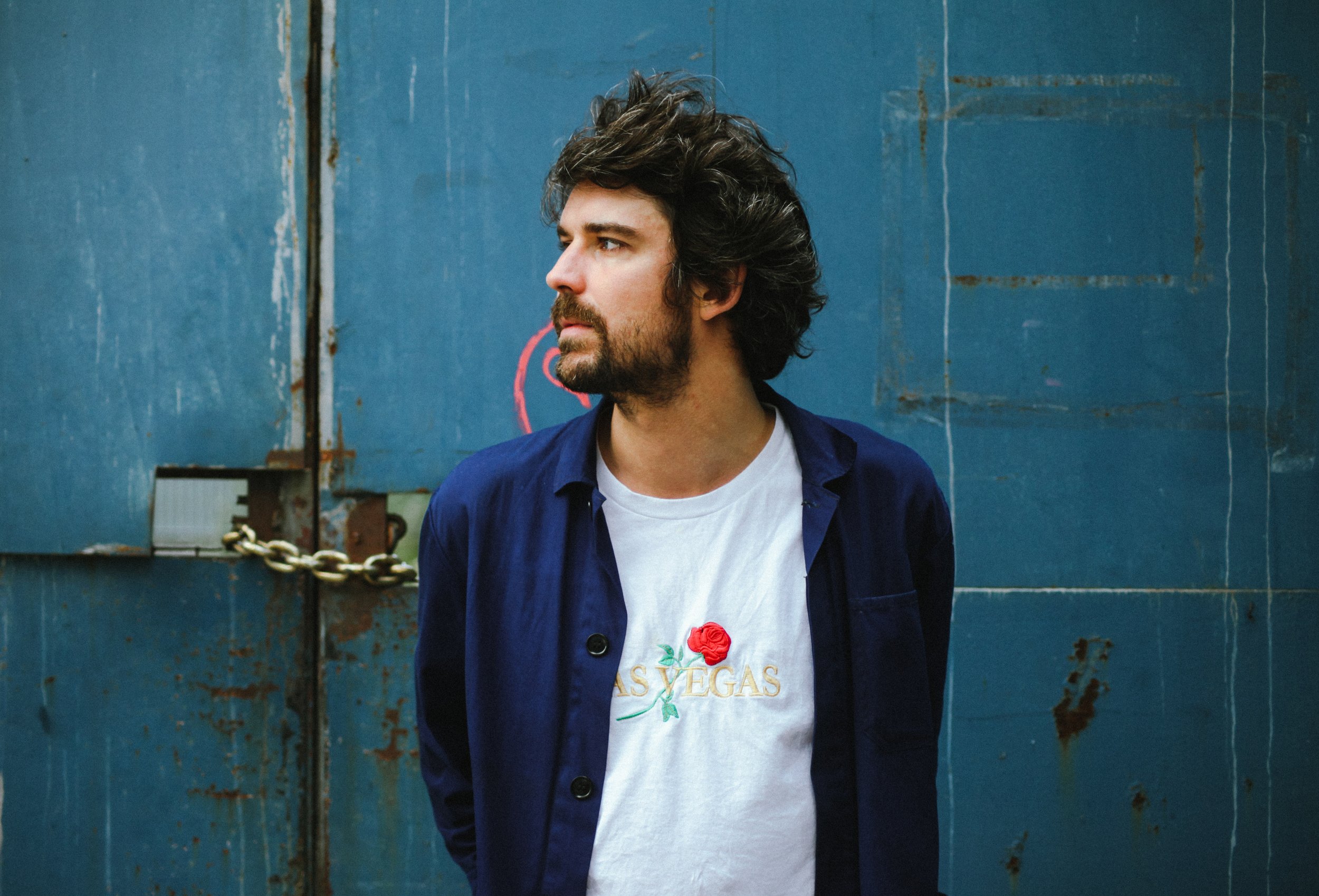Aerside: Making the Machine Sing
‘Dichotomy’ describes the relationship between two opposing things. The fact that they are so different is what makes them linked. The unsettling friction between these states makes them luminous, lighting sparks off each other.
It’s a word that can define Aerside’s music - it’s rich in addictive contradictions, these velcro paradoxes that make the tracks hold fast in your mind. In his recordings, there’s a sensation of new ground being broken. Yet simultaneously they feel familiar, even nostalgic; a memory of a forgotten dream, unearthed by a random trigger. They are built from flashes of heat, and then washed in ice. Human warmth is conducted through the machine. Analogue fuzz saturates a digital chill.
Hot on the heels of his sophomore EP ‘October’, PILOT spoke to him in East London to catch up about absence, classic French pop, and ghosts in the machine.
BC: Tell us about your new video, for the single ‘Autopilot’. How did that come about?
A: The director Michele [Vicenti] approached me in June last year after he’d heard some of my music. At the time, I just had ‘Autopilot’ - that was the song I was really into. To be honest, I hadn’t even finished writing it at the time, but that was the song that started the project.
So, we sat down and threw around some ideas, and came up with this idea of the ghost - that’s what I wanted to explore as the main focus.
So, is that a feature of the song, the ghost?
Yeah. The song is about not wanting to fully connect. You know how sometimes - perhaps out of protecting yourself - you act on autopilot? The first layer is about feeling disconnected from things but by your own making.
That distance, that’s the ‘ice cold’ in the song?
Exactly, that’s where it comes from. But then the chorus brings out this other side, saying: I don’t want to be like that, I want to invest myself in people and the relationships I have and to be there.
But to be honest, I don’t think with music videos that you need a huge narrative arc. I see it more as: OK, here’s a moment - should we use dance, or VFX, or lighting? The VFX artist that worked on the video was Luyang Zhou, and for Michele, VFX was the central thing. Even in the way we made it, we had constantly check it was working - with the lighting, and so on. It was quite challenging because we don’t have a whole 3D studio. We had just one day, not even a full day, on set - 20 people and a van, with everything done between 5 pm and midnight.
So, the ghost?
That was a dancer. They performed their choreography, and then we framed out the dancer and applied the effects over them. We didn’t have a full rotoscoping studio, so it was a bit DIY - I think you can see that in the video!
But in a good way.
Yeah. And we never set out for it to look like a high-budget project - it came out more psychedelic, perhaps from our lack of technique - which was cool.
So you actually finished the track after the video?
[Laughing] Yes. I wouldn’t do that again.
So Autopilot came first - is there anything that binds the EP together, musically?
A timeline. I called it ‘October’ because that was the deadline to finish it. In that month, I didn’t work at all outside of music. I just did that. I was really trying to crystallise something. After ‘Autopilot’, there’s a spontaneousness you can feel in the tracks. That would be the continuity of it - how it’s a photograph in time, through production and songwriting.
Let’s talk about the collaborators in the EP. There’s Archi Silas?
Yes, he’s London-based, an amazing rapper. He’s actually the great-grandson of Charles Dickens if you can believe it!
Weirdly, I never consciously think about putting people on my stuff. In my last EP, I felt there was a hip-hop connection, and just through meeting people and having sessions I found myself working with rappers - like with Le3 Black, which worked quite well. That was more of a hybrid - I think nowadays the boundaries between electronic and hip-hop have completely melted.
It’s always been there, but I did feel more of a hip-hop/ r&b sound in ‘October’ than your last EP, which felt more electronic/ club based.
Definitely. Being in 4/4 at 90bpm - it’s very hip-hop. Even the way I did the beats and processed them: I was ‘sampling-but-not-sampling’ by sampling my own songs, some old projects that didn’t go anywhere. I’d have a folder with a load of loops, and I’d just put them on and rework them.
I’ve also been kind of obsessed with compression on this EP.
Trying to master it as a creative tool?
Yeah, trying to crack it. I’ve not mastered it yet, and a lot of people would disagree with my way of using it - say that it’s not very musical. But I’ve been having fun with it, and the energy of really hearing the effect, hearing the machine. Making the machine sing.
Even with new techniques and styles, there’s a very distinctive ‘Aerside’ sound. Your voice is a very distinctive instrument, yet it’s quite hard to pin down. Has your relationship with singing consciously changed over the years?
It’s more a process of experimentation. For example, on ‘No Tears’: I recorded my part on the iPhone and dropped it in after Archi [Silas] recorded his verse. Talking about compressors again, the iPhone will have its own compressors built-in. People use it for notes and other things that are not musical at all, so there will be a certain processing of the sound which brings out weird elements. Certain things jump out and it ends up quite lively. I’m going to try it again, I like having the track serve my vocals.
You challenge expectations when it comes to vocal effects. They don’t make you sound distant, in fact, the opposite.
Yeah, I get that. Sometimes people tell me I should sing without effects, but there’s a context for everything and those tracks wouldn’t have worked the same way. For example, with ‘Loveless’ I recorded the vocals with a certain tonality, but then remade the track and put it on top of those, and it brought out a weird vocal that is actually very emotional, and even better than the original.
It’s an iterative process.
Yeah. As I said, I really make the machines work, processing and resampling. The more layers the better. Because happy accidents always happen when you try to take things out of context.
So it’s the music of chance - like you’re making chance a collaborator in the project. Saying: that sounds good - let’s push it even further, then make another version, and keep building on the artefacts.
Exactly. Even if something doesn’t work, you put it aside, and later if I’m stuck somewhere else I’ll drop it in and think - alright, that works. It’s just intuition, and I think you should play with your intuition.
Does the term ‘experimental’ mean a lot to you? It’s something that some artists embrace, and some push back against.
I think people say ‘experimental’ more for the public than the artists themselves. Because I think every artist is experimental. Even if you’re making pop, you’ll be experimenting with a new genre of pop… you have to experiment every time, no matter what.
I liked the track ‘Le Sud’, which you sang in French. Is there something that brings that out, is it different to write in French than English?
I didn’t write that song, it was a cover of Nino Ferrer - he’s a huge French singer. It was a song in English called ‘The South’. At the time his recording career was not going that great, and he was about to get dropped by his label. But they heard the track and were like if you want to stay on, you must sing it in French. He knew it would be a banger, yet still, he didn’t want to do it. I think it became his biggest hit.
When I was a kid I used to listen to it, and it just brings out memories. I wanted to sing it in a weird way, which is funny. It was more of a trolling thing… a wink to people that know. I think it ends the project nicely.
______
This interview has been edited for length and clarity.
Bertie Coyle (Writer): IG, Twitter
ZENHOFER (Photography): IG
Aerside (Artist): Soundcloud



